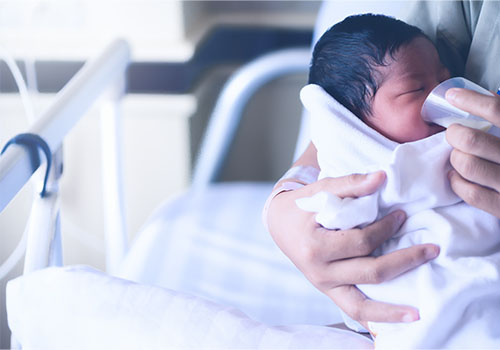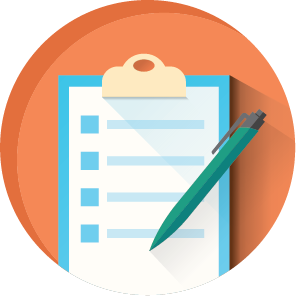Why Step 9?
Images of baby bottles and pacifiers are deeply embedded in our culture, symbolizing a “new baby.” Pacifiers are used worldwide and many health care professionals and parents consider their use to be normal and even necessary.
The use of pacifiers and artificial nipples with infants can interrupt or reduce the frequency of breastfeeding sessions, can indicate that the mother or baby is having problems with nursing and can interfere with establishing the mother’s milk supply.
Research and clinical experience indicate avoiding pacifiers and artificial nipples or bottles for breastfeeding infants until nursing and the milk supply are well-established, which is typically around four to six weeks after birth. Avoiding pacifiers and artificial nipples supports babies’ efforts to communicate their hunger, need for oral stimulation and bonding. It also encourages parents’ understanding of their baby’s “language” and promotes responsiveness to their baby’s needs.

Primary Goals of Step 9
- Educate mothers on the ways to maintain optimal breastfeeding when using bottles, pacifiers and artificial nipples.
- Teach parents alternative methods for soothing their infant and the appropriate time to introduce a pacifier.
- Use alternative infant-feeding methods (e.g. syringe- or cup-feeding, spoon, etc.) when supplemental feeding is indicated.
- Educate mothers and family members on the proper cleaning of feeding utensils.
Ten Step Self-Assessment
Use the Ten Step Self-Assessment to help you evaluate your progress for this step. This self- assessment document does not have to be submitted with application.

New Applicants
- Use document checklist (PDF) to ensure appropriate support documentation is included with application.
- If your current practice does not meet these criteria, review the Ten Step Self-Assessment to assess how your facility might fully implement this step.

Re-Designation Applicants
- Review your individual Ten Step Scorecard from the last designation for change recommendations.
- Use the Ten Step Self-Assessment Tool to help plan for step-by-step improvement in any areas needed.
- Review the Baby Friendly USA, Inc. Guidelines and Evaluation Criteria to view full standard for this step.
Resources
-
Global Health Media Project: Cup Feeding (video)
-
American Academy of Pediatrics (AAP) Policy Statement: SIDS and Other Sleep-Related Infant Deaths: Expansion of Recommendations for a Safe Infant Sleeping Environment
Guidelines on use of pacifiers as strategy to reduce SIDS.
-
UNICEF U.K.: Breastfeeding and hand expression practice skills
Staff skills review form to use in training.
-
UNICEF U.K.: Staff assessment of breastmilk expression techniques
Checklist for use in staff training.
-
UNICEF U.K.: Expression Assessment: Staff Information
Tips for staff to provide support with breastmilk expression.
-
Texas WIC Video: How Do I Calm A Crying Baby? (English)
Video Blog from the Texas WIC program to share with parents.
-
Texas WIC Video: Calmar a un bebé que llora (Spanish)
Video Blog from the Texas WIC program to share with parents.
References
Buccini, GdS, Pérez‐Escamilla, R, Paulino, LM, Araújo, CL, Venancio, SI. Pacifier use and interruption of exclusive breastfeeding: Systematic review and meta‐analysis. Matern Child Nutr. 2017; 13:e12384.
ABM Clinical Protocol #3 Hospital Guidelines for the Use of Supplementary Feedings in the Healthy Term Breastfed Neonate
ABM Protocol #23 Non-Pharmacologic Management of Procedure-Related Pain in the Breastfeeding Infant
Zimmerman, E., & Thompson, K. (2015). Clarifying nipple confusion. Journal of Perinatology, 35(11), 895



